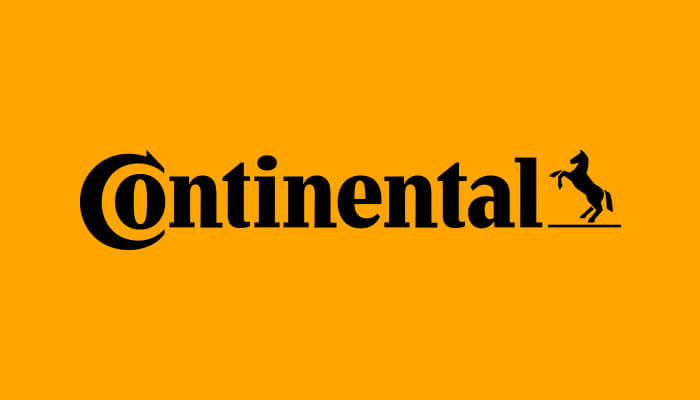
Knowledge is power: Continental Tyres of Australia marketing manager Russel Stewart said many consumers were not well educated about their tyres.
THE lack of regulation in Australia has left motorists exposed to the danger of cheap, old technology tyres when they have to replace their original equipment hoops, according to a senior tyre company executive.
Continental Tyres of Australia marketing manager Russel Stewart said Australia lags behind many countries around the world by not insisting that tyre importers provide consumers with information about the most crucial aspects of tyre performance.
Continental is the world’s fourth largest tyre manufacturer, although it only took over distribution of its products in Australia in 2008. Based in Germany, Continental also has plants in China and is building a plant in Thailand.
Better known in Australia for its Siemens-VDO dashboard and instruments subsidiary, Continental will close its Bundoora plant later this year when Holden and Toyota close their Australian manufacturing operations.
Mr Stewart said tyre consumers were often not well educated about tyres and tended to assess them as much by price as performance. He conceded that the low level of understanding was partly down to the tyre manufacturers themselves.
“A lot of consumers think a tyre is just a round black thing,” he told GoAuto.
“Very few of them see the value in paying the premium. When you stack two tyres next to each other, you can’t see what you are paying the extra $15 for.”
He said the better brands conduct continual research and development while other manufacturers just keep using the same carcass designs and rubber compounds, perhaps with a new tread pattern copied from somewhere else.
“One of the most interesting exercises I have seen done at the Contidrom (the company’s development centre in Hannover, Germany) was when they bought five used BMW 318tis and five new BMW 128is.
“They put a Conti Premium Contact One, built and developed in 2000, on the 1 Series cars and they put a Conti Premium Contact 5 built in 2012 on the 318ti.
“Then they put us on a wet road dynamic driving track and the car that was more enjoyable to drive was the old BMW with the new tyres. The new BMW with the old tyre was terrible to drive, with poor road holding, and it kept losing ABS traction. It was a disaster.
“The whole reason for the exercise was not to compare Conti tyres with a cheap Chinese tyre. It was to compare new technology with old technology, which is what a lot of these cheaper manufacturers are still running on.
 “The past 15 years have really seen a significant jump in tyre specifications.”
“The past 15 years have really seen a significant jump in tyre specifications.”
The comparison demonstrated how far tyre technology had come over the four generations of the Contact One tyre.
The other factor often overlooked is that modern tyres are designed for specific car models, to complement the suspension design and settings set down by the car-maker.
“We submit a tyre design for a new car model and the car-makers come back and says ‘we would like these characteristics changed because we would like the following driving dynamics in our car’. It can take two years of development.
“That’s another thing the consumer doesn’t understand. Generally, the manufacturer has also tuned the tyre to suit the driving characteristics of the car. If you go and put something cheap on there, that has cost $100 less, the whole behaviour of your car changes.
“The safety parameters like wet braking and adhesion will be changed. You might have added five metres to your wet braking distance, and the handling in corners might have changed a lot. The whole car could be transformed in unexpected ways.”
Mr Stewart said that in Europe, South Africa and other countries except Australia, tyre suppliers are required to ensure their tyres are rated for wet braking, rolling resistance and noise and these ratings have to be on the tyres and attached to the buyer’s receipt. This makes it easier to make comparisons.
“Coming out of South Africa, another problem I have seen in Australia is the lack of regulation we have here with regards to tyres.
“South Africa has strong homologation. Every tyre you want to sell in South Africa has to be homologated and you have to actually submit to government your certificates saying these are the quality standards of this tyre.”
Mr Stewart said the homologation system also provided manufacturers protection against parallel importing by operators out to make a quick buck and not actually invest in the local tyre industry.
“The South African government also does random checks on our warehouses. They rock up and pull a couple of tyres off the shelves and then check them against their data base as to what you have homologated.
“What they also do is they protect the brand owners. Continental is the official manufacturer and importer in South Africa and no-one else is allowed to import our product.
“In Australia, we are the official importer and distributor, but anyone can bring in a box of our tyres. They can buy it from a wholesaler in Europe and bring it here and sell them. There is no protection here of local big businesses and to protect the jobs and protect that industry.”
The prevention of parallel importing may seem like corporate self-interest on the surface, but there is also an important consumer protection benefit.
Continental’s product marketing manager Jeff Moorhead said the company did some focus groups two years ago to get an idea of what consumers knew and thought about tyres.
“Both groups over two nights all assumed the tyres had been approved. ‘They’re tested aren’t they? They’re not allowed to sell rubbish here, are they? These products are tested and are safe for our vehicles, aren’t they?’,” Mr Moorhead said.
“Even New Zealand mandates that tyres have to be approved by the US department of transport or must have an E-mark from the European Union.
“It’s required in most tyre markets in the world. It doesn’t mean a whole lot in some respects but, here, you don’t even have to have that,” he said.
Mr Stewart said one of the difficulties for consumers is that they don’t know which questions to ask when they buy tyres.
“It is really hard to get good information on tyres. There is a bit of comparative stuff by magazines, but none of the tyre companies have ever engaged in a large scale comparison system: here’s us compared to our rivals, here’s our wet handling rating and so on.”
Mr Stewart said that, when a tyre-maker wants a long-lasting tyre, there has to be compromises in other areas.
“Tyre performance works on a spider diagram. If someone says I want a high-mileage tyre, the supplier says, ‘Great, I can give you a high-mileage tyre’.
“But when you pull this string to get the high mileage, it usually compromises braking performance, because you have harden up the compound.
“The same goes for optimised rolling resistance. That compound comes at a compromise for something else. I think it’s our duty to educate the consumer that that is the reality.”
By Ian Porter

Russel Stewart












 Read More: Related articles
Read More: Related articles

